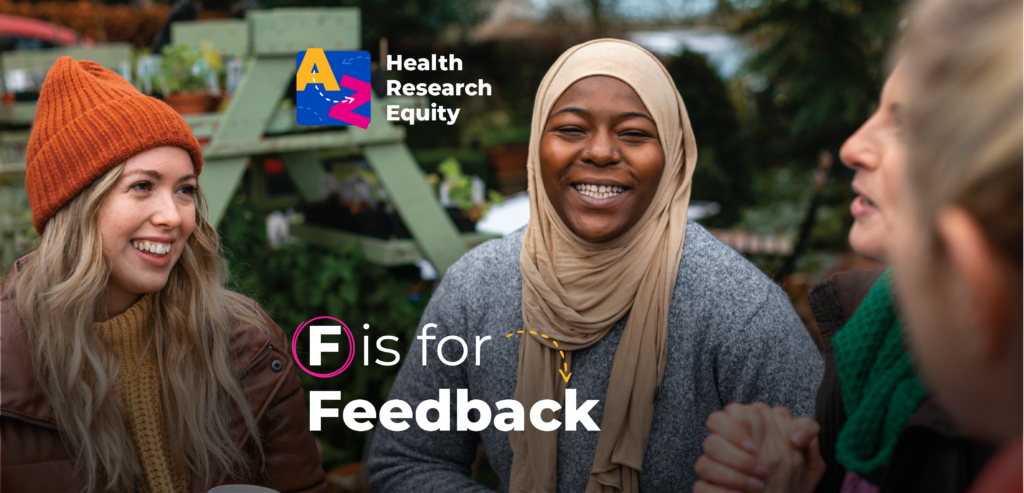Throughout this A–Z blog series so far, I’ve centred my thoughts on the way that we think about health research equity here at COUCH. I’ve highlighted topics that are important to how we work and drawn attention to simple changes you can use to improve inclusivity in your own studies.
Underpinning each of those topics are patients. Ask patients, speak with patients, include patients. Speaking with (not to) patients, is one thing, but what happens afterwards? In this post, I’m talking about Feedback.
Clinical trials would not be possible without patients, so it seems obvious to provide them with feedback on the trial’s results. As well as the ‘it’s the right thing to do’ reasoning, feedback supports research transparency and contributes to building trust with people unsure about taking part in research. The World Medical Association’s Declaration of Helsinki, a statement of ethical principles that support medical research involving humans, confirms this as best practice. First adopted in 1964, the principles have been updated eight times since their formation, the most recent being in 2013. It states, ‘All medical research subjects should be given the option of being informed about the general outcome and results of the study.’
At this point, I could easily get sidetracked and spend the rest of this post talking (read: ranting) about their use of the term ‘subjects’. I won’t do that, but I can’t just skim over it. The word ‘subject’ is defined as a person who is being discussed, described, or dealt with. That is not how trial participants should be treated.
I think it’s fair to say that most of us agree that providing patient feedback on the trial’s results is a good idea, but is that what’s happening in practice?
Not quite.
Research published in 2020 showed that out of 1404 phase 3 trials registered on the UK’s research permissions system between 2012 and 2017:
- 1231 trials (87.7%) said they intended to feedback results to participants, 173 (12.3%) did not.
- Out of the 1231 trials that said they would feedback results:
- 231 (18.8%) intended to actively communicate with participants; these methods included a letter, lay patient summary, newsletter, sending a web link to results, and face-to-face meetings.
- 991 (80.5%) reported a passive intention; these methods included publication in scientific publications and putting information into the public domain via a website or media engagement.
- The process for the remaining 9 trials was unclear.
If you had taken part in a clinical trial, taken an experimental drug and engaged with a research team for months, sometimes years, to provide information about your condition, would you be happy with someone putting the results of the trial on a website that you don’t even know exists? Personally, I imagine I’d feel frustrated, overlooked, and as if my contribution was not valued.
The same research team (my old colleagues at the University of Aberdeen) built on this work in 2021, publishing a scoping review of evidence relating to any aspect of sharing trial results with participants in phase 3 pragmatic trials.
The review analysed 33 studies, including 12,700 participants, and found:
- The most common method of feeding results back to trial participants was postal.
- Overall, participants viewed receiving trial results positively, highlighting that they felt appreciated by the trial team.
- Trials that provided feedback to participants reported improved retention rates, as well as participants that were more likely to engage in future research.
Particularly relevant for health research equity are findings (or lack of) focusing on people historically underserved by health research:
- There are few studies exploring perspectives on trial feedback from underserved populations, and those conducted are limited to just a few clinical areas.
- Reporting of participant characteristics such as age, gender, and ethnicity was poor, meaning that we are unable to use the data to explore whether feedback is received positively by specific groups of people.
- Similarly, we are unable to say whether specific methods of delivering feedback are preferred by specific groups of people.









